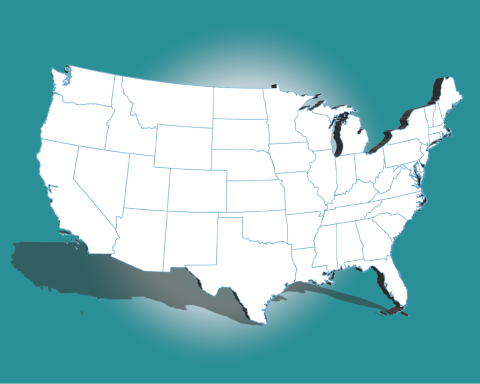Abortion in the News: What You Should Know
Whenever there is meaningful momentum to advance abortion rights in the United States at the federal or state level, those who oppose abortion rights will fall back on the same well-worn playbook, hijacking the narrative and recklessly pushing lies and provocative language without regard for the facts.
For example, in response to a newly enacted abortion rights law in New York and proactive momentum in other states, antiabortion activists and politicians have been spinning a false and inflammatory narrative about abortion later in pregnancy in an effort to distract us from their true agenda: banning abortion outright.
The Real Goal of Antiabortion Politicians is to Ban All Abortion
As hyperbolic rhetoric and misinformation continue, it’s critical to remember that the same people manufacturing public outrage by deliberately misconstruing the facts and evidence around abortion later in pregnancy are simultaneously working to ban all abortions at any point during pregnancy—and for any reason.
For instance, between 2013 and 2018, five states have enacted bans on abortion between 6 and 15 weeks of pregnancy: Arkansas, Iowa, Louisiana, Mississippi and North Dakota. None of these bans are currently in effect due to court decisions and litigation, but similar measures are increasingly being introduced targeting earlier and earlier stages of pregnancy.
At the same time, 21 states ban abortion at 20 or 22 weeks of pregnancy: Alabama, Arizona, Arkansas, Georgia, Idaho, Indiana, Iowa, Kansas, Kentucky, Louisiana, Mississippi, Nebraska, North Carolina, North Dakota, Ohio, Oklahoma, South Carolina, South Dakota, Texas, West Virginia and Wisconsin. All are in effect except those in Arizona and Idaho. These bans are unconstitutional and not based on sound medical evidence.
Antiabortion Ideologues Are Pushing a Wide Range of Restrictions
While antiabortion ideologues are publicly stoking misinformation and outrage over proactive efforts in the states, they are simultaneously pushing a wide range of ideologically driven restrictions that make it harder for patients to obtain an abortion and more difficult for providers to keep their doors open.
Let’s put this in perspective: In the first six weeks of 2019 alone (January 1, 2019 through February 13, 2019), state legislators introduced 140 abortion restrictions. Any new abortion restrictions enacted in 2019 would add to the 424 abortion restrictions enacted between 2011 and 2018. Of those 424 restrictions, 17% relate to Targeted Restrictions on Abortion Providers (TRAP) laws, 14% relate to counseling and waiting periods, 15% relate to public and private abortion coverage restrictions, 9% relate to medication abortion, 9% relate to parental involvement, and 6% relate to gestational age limits.
On their own, each type of abortion restriction inhibits people from accessing the care they need by making abortion harder to access and harder to pay for. Taken together, the wide range of abortion restrictions blocks many people from obtaining an abortion altogether, and is especially detrimental for young people, people of color and people with low incomes trying to obtain an abortion.
Medical Providers Must be Trusted to Treat Their Patients
When someone decides to have an abortion, they should be able to do so safely, with dignity and as soon as they need the care—which is just one reason why medical providers must be trusted to treat their patients without ideologically driven political interference. There are many factors that influence the timing of abortion care, including, but not limited to, restrictions that create obstacles to care, gaps in the availability of services, maternal health conditions and the health of the fetus.
Antiabortion policymakers have passed more than 1,000 abortion restrictions since 1973. These restrictions are designed to delay abortion or make it outright impossible through multiple tactics, including state-mandated waiting periods, medically inaccurate counseling requirements, intentional misinformation from antiabortion crisis pregnancy centers (CPCs), gestational limits that force patients to arrange for travel out of state, and insurance coverage restrictions that force many patients to pay out of pocket, just to name a few.
With Roe at Risk, State Protections are Crucial
With Roe v. Wade at risk under this U.S. Supreme Court, state policies that protect abortion rights are absolutely crucial. Some actions states can take include affirming and protecting the right to abortion, requiring abortion coverage through Medicaid and private insurance, ensuring access to information, supporting adolescents’ access, preventing clinic violence, expanding the pool of abortion providers, expanding online and telehealth access, and creating a safe policy environment for self-managed care.

